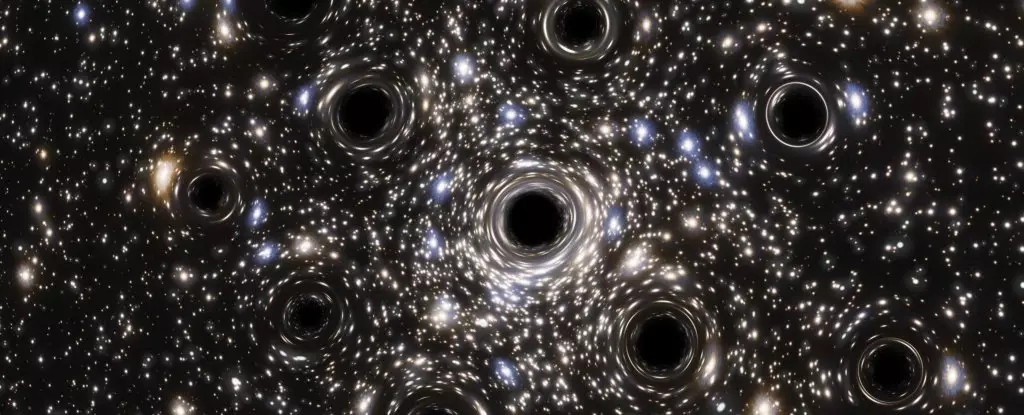Globular clusters pique the interest of astrophysicists, not only as relics of the early cosmos but also as potential cosmic laboratories for the study of the universe’s evolution. Among these dense stellar environments lies Palomar 5, a unique star cluster situated approximately 80,000 light-years away, revealing intriguing secrets about stellar-mass black holes that lie hidden within its depths. As our understanding of these clusters develops, Palomar 5 emerges as a focal point, shedding light on the dynamic interactions and evolutionary trajectories of stars in our galaxy.
Globular clusters, like Palomar 5, consist of thousands to millions of stars tightly packed together, often reminiscent of cosmic fossils from the universe’s formative years. These spherical formations may contain stars that formed nearly 13 billion years ago, providing researchers with an opportunity to study the conditions of the early universe. Around 150 globular clusters are currently recognized in our Milky Way, serving as invaluable tools for understanding phenomena such as the formation of galaxies and the distribution of dark matter.
Typically, these clusters are uniformly composed of stars that emerged from a common molecular cloud. Their homogeneity allows scientists to probe the formative processes that shaped the galaxy. However, alongside these clusters, a more elusive structure has begun capturing attention—the tidal streams. These long, thin streams made up of stars extend across the sky and hint at the complex gravitational interactions that occur within and around globular clusters.
Researchers have long grappled with tidal streams, as their identification was often hampered by observational challenges. The advent of the Gaia space observatory, however, has revolutionized our comprehension of the Milky Way’s structure by providing unprecedented three-dimensional maps of stellar positions and motions. This invaluable data has unveiled a plethora of previously overlooked tidal streams, stimulating conversations surrounding their origins and relationships to neighboring star systems.
Astrophysicist Mark Gieles emphasizes that the precise formation mechanisms of tidal streams remain uncertain. Some hypotheses suggest that these structures could arise from the disruption of globular clusters, but no observable clusters have been directly associated with the newly identified streams. This lack of clarity underscores the urgency of studying established clusters like Palomar 5 to glean insights into the formative processes that govern these extended stellar configurations.
Palomar 5 stands out due to its atypical spatial distribution of stars and a remarkably elongated tidal stream that spans over 20 degrees across the sky. A group of astrophysicists, led by Gieles, turned their focus to this cluster to decode its structure and evolutionary history. The researchers employed sophisticated N-body simulations to replicate the orbits and movements of the cluster’s stars, integrating the potential influence of black holes into their models.
Recent investigations indicate that stellar-mass black holes might congregate in the cores of globular clusters. This discovery aligns with the notion that interactions with these black holes can disrupt stellar orbits, pushing stars into tidal streams. The simulations conducted by the team revealed that an original population of over 100 black holes likely resides in Palomar 5. This result is more significant than previously anticipated—the cluster is three times more likely to harbor black holes than the number of stars might suggest.
The implications of the Palomar 5 study extend beyond mere star counts; they forecast an impending fate for the cluster itself. The simulations project that in roughly one billion years, the remaining remnants of Palomar 5 will consist primarily of black holes that have completely disbanded from their stellar companions, dissolving into an expansive stellar stream.
This predictive insight reveals an essential truth about the fate of globular clusters; they are destined to gradually lose their stellar populations and dissolve into tidal streams similar to those observed around Palomar 5. Furthermore, the findings signal a call to action for astrophysicists to explore globular clusters as prime sites for identifying binary black hole mergers, as well as the elusive mid-range black holes situated between stellar and supermassive classes.
The research conducted on Palomar 5 serves as a critical cornerstone in elucidating the intricate relationships between globular clusters, tidal streams, and black holes. As discoveries continue to unfold, the cluster’s role as a unique celestial laboratory allows us to piece together the cosmic puzzle of stellar evolution and gravitational interactions. The continued exploration of such ancient cosmic structures not only provides answers to longstanding questions but also unveils new mysteries yet to confront our understanding of the universe’s dramatic narrative.


Leave a Reply